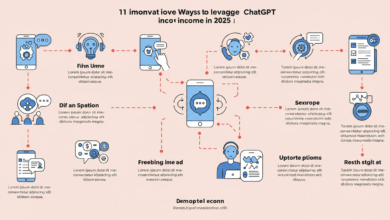Understanding Highway Contract Routes: A Comprehensive Guide

Highway Contract Routes (HCRs) play a critical role in the transportation infrastructure of the United States Postal Service (USPS). By employing private contractors to manage mail transportation between facilities, HCRs help ensure timely and efficient delivery across a range of geographic areas, including remote and rural regions. This article explores the concept of highway contract routes, their operational framework, and the challenges and opportunities they present. You now about highway contract route.
What Are Highway Contract Routes?
HCRs are mail delivery routes operated by private contractors under USPS contracts. These contractors handle the transport of mail between processing centers, post offices, and other designated points. The contractors provide their vehicles and are compensated based on the distance, frequency, and nature of the routes they cover.
HCRs are indispensable for delivering mail to areas that are less cost-effective for USPS staff to service directly. These routes vary widely in scope, from short local deliveries to long-haul interstate operations. Contractors are tasked with meeting the USPS’s stringent delivery standards, ensuring that mail arrives on time and in good condition.
The Significance of Highway Contract Routes
Highway contract routes are a vital component of the USPS’s mission to provide universal service across the United States. Their significance lies in several key areas:
- Cost Efficiency: By outsourcing certain transportation tasks to private contractors, the USPS reduces operational costs. HCRs allow the USPS to allocate resources more effectively and focus on core activities.
- Enhanced Reach: HCRs enable the USPS to maintain its commitment to delivering mail to every community, including remote and rural locations. Without these routes, many areas would face significant service gaps.
- Economic Support: Many HCR contractors are small business owners or independent operators. By providing reliable income, these contracts support local economies and create jobs.
- Operational Flexibility: The USPS can adjust HCR routes and schedules to meet changing mail volumes and seasonal demands, ensuring service reliability even in fluctuating conditions.
How Highway Contract Routes Work
The process of establishing and maintaining HCRs involves multiple steps:
- Route Identification: The USPS identifies routes that are best suited for contractor operation. This decision is based on factors such as distance, volume, and cost-effectiveness.
- Bidding Process: The USPS issues requests for proposals (RFPs), inviting contractors to bid for the routes. Contractors submit detailed proposals, including cost estimates and operational plans.
- Contract Awarding: Contracts are awarded to the most qualified bidders, with considerations for cost, reliability, and compliance with USPS standards.
- Service Monitoring: Once a contract is in place, the USPS monitors the contractor’s performance through regular evaluations, ensuring adherence to the terms of the agreement.
Challenges Facing Highway Contract Routes
While HCRs provide significant benefits, they also face several challenges:
- Fuel Costs: Rising fuel prices can strain contractors’ budgets, as transportation costs directly impact profitability.
- Regulatory Compliance: Contractors must adhere to federal and state regulations, including safety standards and transportation laws, which can be complex and costly.
- Driver Shortages: Finding and retaining skilled drivers is a persistent challenge, especially for long-distance routes. Competitive wages and benefits are necessary to attract talent.
- Operational Risks: Weather conditions, vehicle breakdowns, and other unforeseen issues can disrupt mail transportation, requiring contingency planning.
Opportunities for Improvement
Addressing the challenges associated with HCRs involves several strategies:
- Incorporating Technology: Advanced route optimization software and tracking systems can improve efficiency and provide real-time updates for contractors and the USPS.
- Financial Support: Subsidies or incentives for fuel and vehicle maintenance can help contractors manage rising costs and maintain service quality.
- Training Programs: Providing contractors with resources and training on compliance, safety, and operational best practices can enhance performance and reduce risks.
- Sustainability Initiatives: Encouraging the use of fuel-efficient or electric vehicles can reduce environmental impact and lower long-term operational costs.
The Future of Highway Contract Routes
As the USPS adapts to the evolving demands of e-commerce and technological advancements, HCRs will remain a cornerstone of its transportation strategy. Innovations such as autonomous delivery vehicles and environmentally friendly transportation solutions could further enhance the efficiency and sustainability of these routes.
The growing reliance on package delivery, driven by online shopping trends, underscores the importance of a robust HCR network. By addressing current challenges and leveraging new opportunities, the USPS can ensure that highway contract routes continue to meet the needs of businesses and consumers alike.
Conclusion
Highway contract routes are a critical element of the USPS’s infrastructure, ensuring reliable mail delivery across the United States. Despite challenges such as rising costs and regulatory demands, HCRs offer significant benefits, including cost savings, operational flexibility, and economic support for local communities. With strategic improvements and a focus on innovation, highway contract routes will remain an integral part of the postal service’s mission to connect people and places efficiently and effectively.



